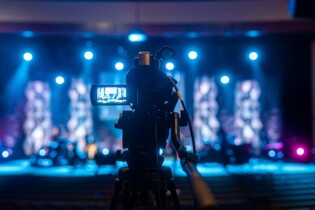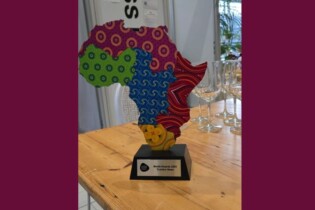Why do we have conferences in the first place? was the immediate question which came to mind when reading the other Michael Jackson’s excellent article entitled ‘Thoughts on Re-engaging Conference Audiences’. Jackson’s opening salvo hit-the-nail-on-the-head ‘….industrial revolution era time-warp of darkened rooms, rows of chairs and merciless nonstop barrages of largely incomprehensible data which is dumped (at great expense) on the heads of the delegates…’
In 2016 and in many event planning instances – there is a supplier-led manner in which conference end-user decision-makers have been influenced. For example: staging and production companies prefer darkened rooms with the focus on the stage which means the presenters are unable to ‘eye-ball’ their audience while equally the glare of lights can be a challenge to many presenters.
Although many staging companies are experts in their particular field – theatre-type conference performances are counter-productive to the initial reasons for the conference.
Venues – in turn – appear to prefer rows of chairs – that is cinema-seating – to any other type of seating for reasons of easy set-up / break-down and hence usually advise their clients that this is the ‘norm’ which is quite acceptable to all and sundry. Rather capacity than comfort is actually what is being suggested which limits any type of laptop, tablet, smart-phone usage to the bare minimum, if at all.
Presenters are rarely briefed as to quality inputs with clear, simple visuals to allow the audience to grasp – with appropriate chairperson guidance – and prepare their questions and comments following the presentation. Presenter briefs seldom indicate established stats which show the amount of time an individual can maintain high-levels of concentration which are equally dependent on the time of day as well as amount and type of conference breaks.
The expense in mounting these laborious events with limited follow-up of message retention has – in several instances – become legendary. In order to ensure the best bang for the buck, it is essential that the event has an effective follow-up. No event should be an end in itself. The event outcomes should have motivations to become the foundation for the next positive step going forward.
All these negative event issues stem from questionable event planning whether internal or independently contracted event management entities.
To tackle event planning issues of this nature – a participatory conference entitled ‘Setting Standards in Event Planning’ has been facilitated by The MICE Academy. Scheduled for Thursday 13th October at Hackle Brooke Centre the conference content follows on from the 2015 Event Industry Summit outcomes. There was unanimous agreement that event planning standards were paramount and should be positively progressed.
The programme includes short, to-the-point subjects such as:
*Implementing an Industry-led Standard – A Success Story
*Reducing Financial Risk through a Clearing House
*Foreign Certification Programmes – the Facts & the Fiction
*Easy Planner Standards for All
*Simple Event Safety – An Indication of a Planner’s Duty of Care
*Participatory Panels – (1) Supplier Management & (2) Buyer (end-user) Management
Why do we have conferences in the first place? The answer is greater message retention which can only be effectively achieved with proper planning before, during and following all events.
Bookings open in September for ‘Setting Standards in Event Planning’. Interested in receiving the final programme and details?
www.plannerstandards.com Click on the icon and follow the requirements..
*Helen Brewer from The MICE Academy is an independent contributor and articles do not necessarily reflect the opinions and views of The Planner.







